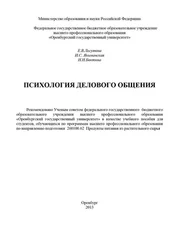Hasegawa T., Gudykunst W. Silence in Japan and the United States // Journal of Cross-cultural Psychology. 1998. V. 29. № 5. P. 668–684.
Hecht M. L., Ribeau S. Ethnic communication: A comparative analysis of satisfying communication // International journal of intercultural relations. 1984. N 8. P. 135–151.
Hemesath M., Pomponio X . Cooperation and culture: students from China and United States in a prisoner’s dilemma // Cross-cultural research. 1998. V. 32. N 2. P. 171–184.
Hirokawa R., Miyahara A. A comparison of influence strategies utilized by managers in American and Japanese organization // Communication Quarterly. 1986. N 34. P. 250–265.
Hofstede G. Value systems in forty countries // Cross-cultural contributions to psychology / L. Eckensberger, W. Lonner. Poortinga. Lisse, Netherlands, 1979.
Hofstede G. Culture’s Consequences: International differences in work related value. Beverly Hills, 1980.
Hofstede G. Dimensions of national cultures in fifty countries and three regions. // Explications in cross-cultural psychology / J. Deregowski, S. Dzuirawiec, R. Annis Lisse. Netherlands, 1983.
Hofstede G. Cultural constrains in management theories // Academy of managment executive. 1993. V. 7. N 1. P. 81–94.
Huston T. L., Levinger G. Interpersonal ayraction and relationships // Annual revie Psychology. 1978. P. 115–156.
Hymes D. Models of the interaction of language and social life // J. Gumperz, D. Hymes. Directions of sociolingustics. N. Y., 1972.
Izard C. The face of emotion. N. Y., 1971.
Johnson C. Interdependence, reciprocity and indebtedness. An analysis of Japanese American kinship relations // Journal of marriage and the Family. 1977. 39. P. 351–364.
Jolley R. P., Zhi Z., Thomas G. V. The development of understanding moods metaphorically expressed in pictures // Journal of cross-cultural psychology. 1998. N 2. P. 358–376.
Kagan S., Knight G., Martinez-Romero S. Culture and development of conflict resolution style // Journal of Cross-Cultural Psychology. 1982. N 13. P. 43–59.
Kasperson R. E., Golging D., Tuler S . Social distrust as a factor in siting hazardous facilities and communicating risks // Journal of social issues. 1992. N 4. Vol. 48. P. 161–187.
Katz L., Braly K. Racial stereotypes in one hundred college students // Journal of Abnormal and social psychology. 1933. V. 28. P. 280–290.
Kendon A. Studies in the behavior of social interaction. Liss., 1977.
Kimmel P. R. Cultural perspectives on International negotiations // Journal of social issues. V. 50. N 1. 1994. P. 179–196.
Knapp M. Dyadic relationship development // Nonverbal interaction / J. Wiemann, R. Harrison/ CA: Beverly Hills, 1983.
Langlois C., Langlois J.– P . Behavioral issues of rationality in international interaction // Journal of conflict resolution. 1999. V. 43. N 6.
Leonhard K. Der menschliche ausdruck. Leipzic, 1968.
Lesiker R. V. Basic business communication. Boston: Mass., 1991.
Levine R., Norenzayan A. The pace of life in 32 countries // Journal of cross-cultural psychology. 1999. V. 30. N 2. P. 178–205.
Lonner W. The search for psychological universals // Handbook of cross-cultural Psychology. Boston, London, Sydney, Toronto, 1980. V. I. P. 143–204.
Mackay K. J., Fesenmaier D. R. An exploration of cross-cultural destination image assessment // Journal of travel research. 2000. V. 38. May.
Mahler I. , Greenberg L., Hayashi H. A comparative study of rules of justice: Japanese versus Americans // Psychologia. 1981. P. 1–8.
Martin J., Nakayama Th. Intercultural communication in contexts. L. Toronto, 2000.
McLaughlin M. Conversation: How talk is organized. Beverly Hills, 1984.
Miller M., Reynolds R., Cambra R. The selection of persuasive strategies in multicultural groups. Paper presented at speech Communication Association Convention. Louisviller, Ky., 1982. November.
Morse S. Requirements for love and friendship in Australia and Brazil // Australian journal of psychology. 1983. № 35. P. 469–476.
Nierenberg G. J., Calerro H. H. How to read a person like a book. N. Y., 1973.
Nishida H., Hammer M. R., Wiseman R. Cognitive differences between Japanese and americans in their perceptions of difficult social situations // Journal of cross-cultural psychology. 1998. V. 29. N 1.
Noesjirwan J . A rule-based analysis of cultural differences in social behavior: Indonesia and Australia // International Journal of psychology. 1978. N 13. P. 305–316.
Nomura N., Barnlund D. Patterns of interpersonal criticism in Japan and the United States // International Journal of Intercultural Relations. 1983. № 7. P. 1–8.
Okabe R. Cultural assumptions of East and West: Japan and the United States // Intercultural communication theory / W. Gudykunst. Beverly Hills, CA. 1983. P. 1–33.
Oskamp S. Attitude and opinions. Prentice Hall, N. J., 1991.
Pascale R. T., Athos AG. The art of Japanese management. Harmondsworth, 1998.
Peabody D. National characteristics. Cambridge University Press, 1985.
Samovar L. A., Porter R. E . Communication between cultures. N. Y., 1995.
Samovar L, Porter R., Stefani L. Communication between cultures. Belmont, 1995.
Schimmack U. Cultural influences on the recognition of emotion by facial expressions. Individualistic or Caucasian Cultures? // Journal of Cross-Cultural Psychology. 1996. № 1. P. 37–50.
Spitzberg B., Cupach W. Interpersonal communication competence. CA: Beverly Hills, 1984.
Tessler M., O’ Barr W., Spain D. Transition and identity in changing Africa. N. Y., 1973.
Ting-Toomey S. Toward a theory of conflict and culture // Communication, culture, and organizational processes / W. Gudykunst, L. Stewart, S. Ting-Toomey. Beverly Hills, CA, 1985.
Ting-Toomey S. Japanese communication patterns: Insider versus the outsider perspective // Word Communication. 1986a. N 13. P. 113–126.
Ting-Toomey S. Conflict styles in black and white subjective culture // Current research in interethnic communication / Y. Kim. Beverly Hills, 1986b.
Ting-Toomey S. A comparative analysis of the communicative dimensions of love, self-disclosure maintenance, ambivalence, and conflict in three cultures:
France, Japan, and the United States. Paper presented at the International Communication Association convention. Montreal, 1987, May.
Ting-Toomey S. A face-negotiation theory // Theory in intercultural communication / Y. Kim. Gudykunst. Newbury Park, 1988.
Triandis H. Interpersonal relations in international organizations // Organizational behavior and human performance // 1967. N 7. P. 316–328.
Triandis H. Interpersonal behavior. Monterey: CA, 1977.
Triandis H . Some universals of social behavior // Personality and social psychology bulletin. 1978. N 4. P. 1–16.
Triandis H. Individualism and collectivism. Boulder, San Francisco, Oxford. 1995.
Tuan Y. Segmented worlds and self: Group, life and individual consciousness. Minneapolis: University of Minnesota Press, 1982.
Vijver, Fons J. Van De; Leung Kwok. Methodological issues in psychological research on culture // Journal of cross-cultural psychology. 2000. N 1. P. 33–51.
Watson M. Proxemic behavior. The Hague-Paris, 1970.
Werner C., Altman I, Axley D . Temporal aspects of homes: A transactional perspective // Home environments / I. Altman, C. Warner. N. Y., 1985.
Читать дальше
Конец ознакомительного отрывка
Купить книгу












